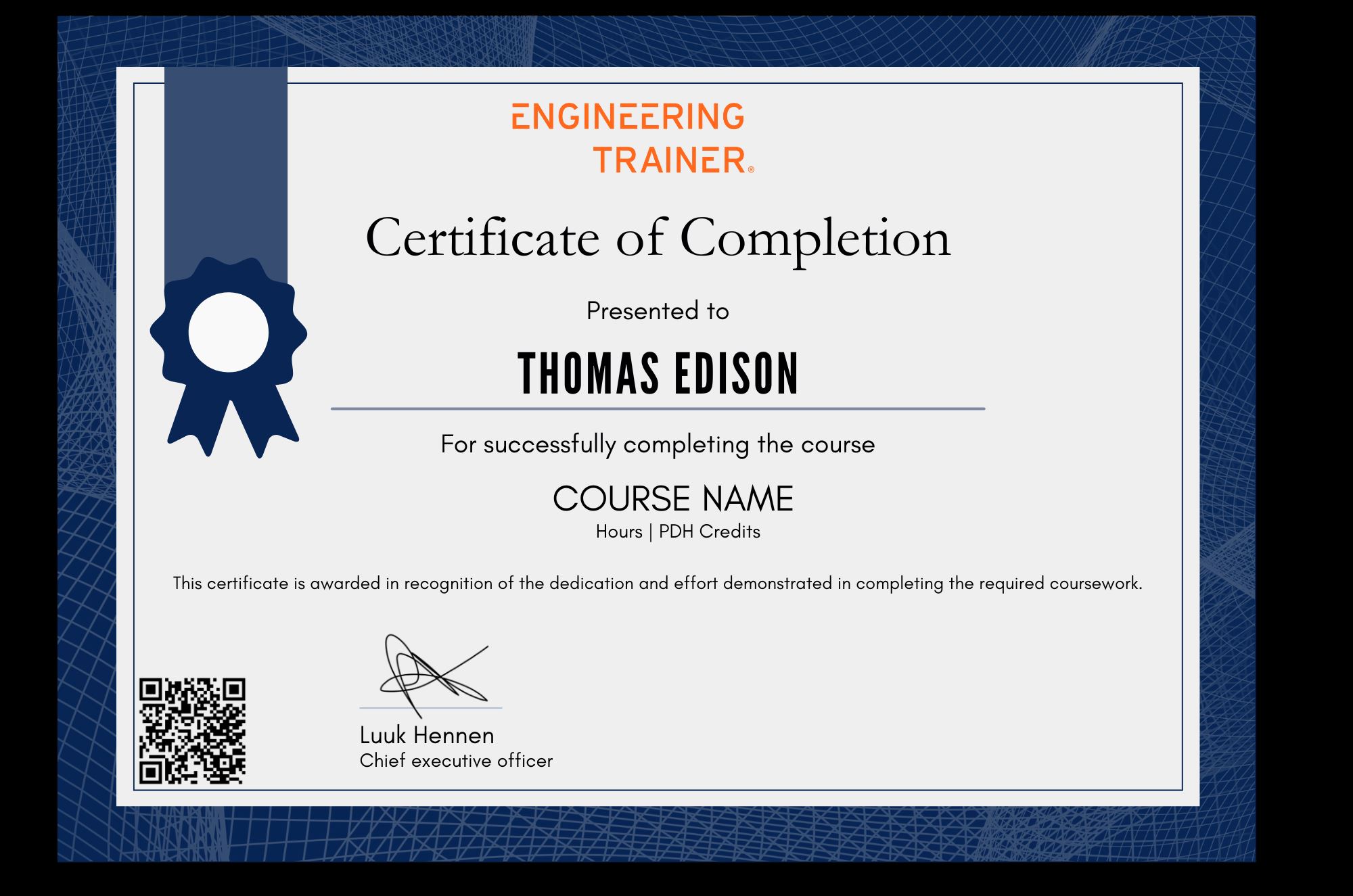Expansion Joints for Piping Stress Engineers
About the course
Piping stress engineers often do not have in-depth knowledge of the theory, function and calculation methods of expansion joints. This lack of understanding can lead to a misunderstanding between piping engineers (or piping stress engineers) and expansion joint manufacturers. During the pipe stress analysis phase an expansion joint manufacturer is likely not to have been selected yet. If an engineer cannot preselect an expansion joint from a manufacturer catalogue, they must know how to make the best assumptions and preselect appropriate input data for the pipe stress analysis.
This course will provide a detailed overview of expansion joints and the key features which are relevant for piping engineers. The theoretical calculation methods, including those in the EJMA (Expansion Joint Manufactures Association) standard, will be explained and it will be shown how these can be used for calculating the required input for piping stress analysis.
Participants may also be interested in Part 2 (VILT1402) of this course.
The course consists of 4 online live sessions with the instructor. All training content is provided through your EngineeringTrainer account.
Learning Outcomes
After this course, you...• are able to preliminary select an expansion joint type for the design of a piping system, regarding displacements and levels of stiffness,
• understand the common expansion joint types that are available on the market, and their properties so that your design solution can be tailored towards these,
• are familiar with the analytical calculation methods and the EJMA (Expansion Joint Manufacturers Association) best practice,
• have seen the basics of how expansion joints can be modeled in a computational piping flexibility analysis, such as CAESAR II,
• have seen what is good and bad practice when using an expansion joint,
• will be able to efficiently communicate your requirements to an expansion joint supplier and within your design team.
Who should attend this course
• Piping stress engineers of all levels.• Those involved in reviewing piping stress analyses.
Prerequisites
General piping design backgroundProgram & Details
-
Introduction
Live
1. What are expansion joints?
2. Types of expansion joints
3. Two contradictory demands -
Expansion Joint Basics
Live
1. Methods of absorbing thermal growth
2. Expansion joints types of movement
3. Movement basics
4. Types and symbols according to EJMA
5. Expansion joints types
6. Bellows fabrication
7. Design limits
8. Strength and stability requirements
9. Stiffnesses
10. Evaluation of expansion joints allowable movements
11. Pressure thrust force
12. Movement, force and moment equations
13. Example calculations in accordance with EJMA -
Application Of Expansion Joints In Compensating Piping Thermal Expansion
Live
1. Axial movement
2. Lateral movement
3. Angular movement -
Expansion Joints Selection Logic
Live
1. Selection of expansion joints
2. Optimisation of the selection process -
Special Application of Expansion Joints
Live
1. Some special cases
2. Protecting sensitive equipment -
Examples Of Wrong Application Of Expansion Joints
Live
1. Example 1: Failure due to incorrect usage of an expansion joint
2. Example 2: Failure due to the use of the wrong type of expansion joint -
Typical Causes Of Expansion Joint Failure
Live
1. Typical causes
2. Grouping errors into categories
3. What to do and what not to do -
Key "take aways“ for Pipe Stress Engineer
Live
1. Standard expansion joints
2. What to do when we need expansion joints -
What To Do When Expansion Joints Data Are Not Listed In Catalogues?
Live
1. EJMA (Expansion Joint Manufacturers Association) calculations
2. Assumptions and good estimates -
Bellows Calculation Tools/Software
Live
1. Available general tools
2. Available specialised tools -
Expansion Joint Modelling and Analysis Basic
Live
1. Simplified models of expansion joints
2. Complex models of expansion joints
Certification

Contact us to Learn More

Why choose EngineeringTrainer
-
Unlimited Team-wide Access
-
Advance Technical Competences
-
Courses by Industry Authorities
Since using EngineeringTrainer our internal mentorship has a much more matured character.
Logan Chapman - COO at Chapman Consulting Inc.








